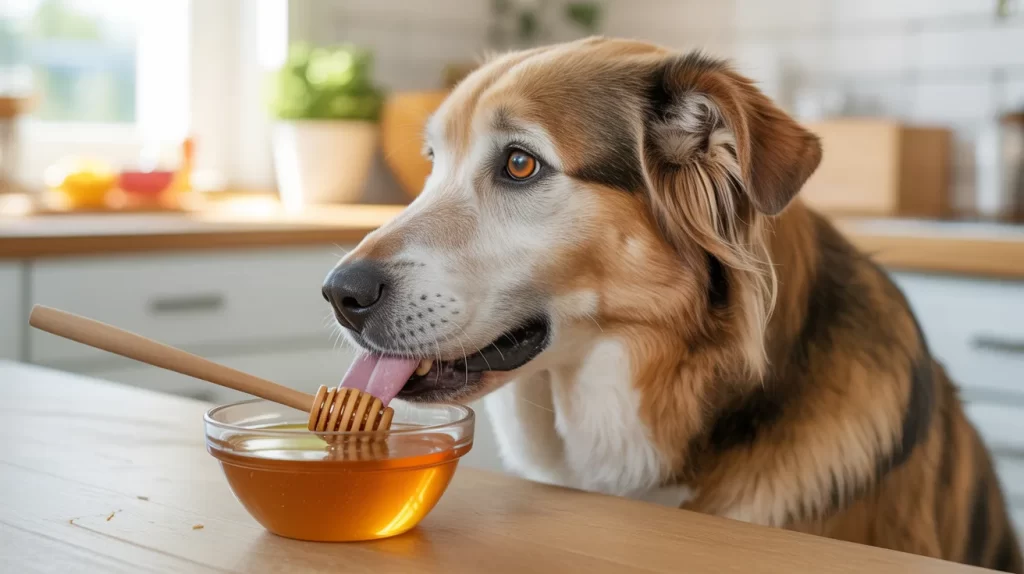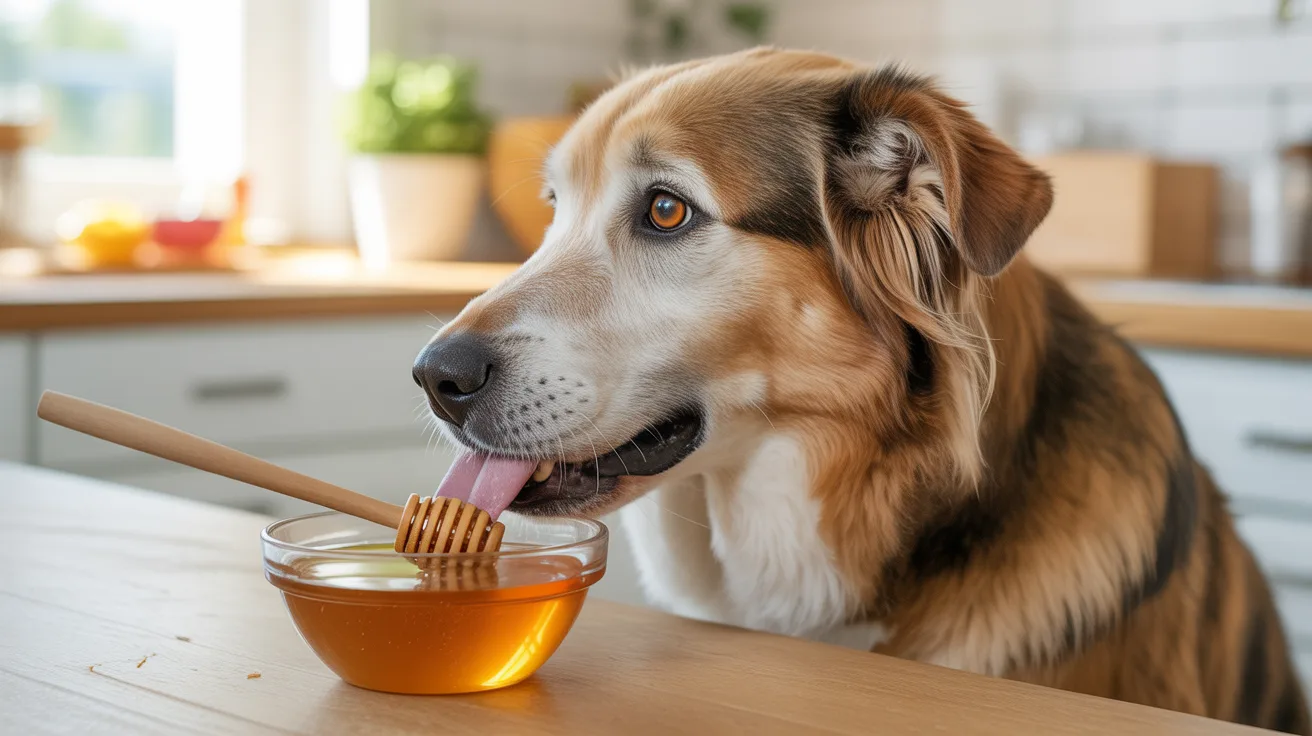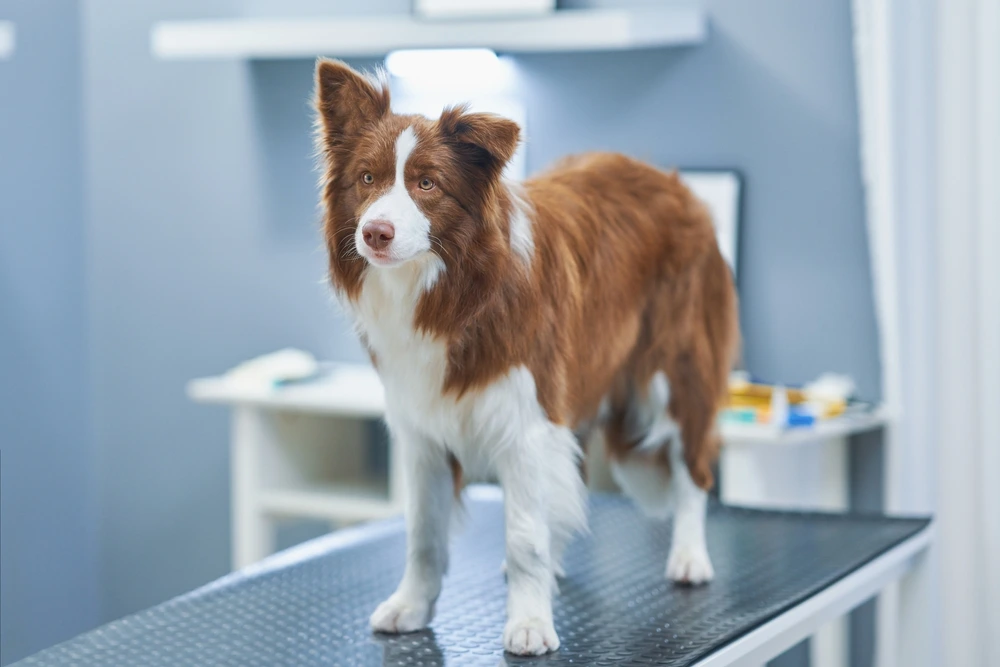Many dog owners often wonder: can dogs have honey? You might be enjoying your morning honey toast and think, “Can I safely share a little with my furry friend?” The answer is yes—but with caution. Honey is a natural sweetener packed with nutrients, but giving it to your dog comes with guidelines you should follow to keep your pet healthy and safe. In this article, we’ll explore the benefits, risks, and best ways to feed honey to dogs, complete with practical tips, real-life examples, and FAQs.

Content
Is Honey Safe for Dogs?
Honey is generally safe for dogs in moderation, especially for adult dogs. It contains natural sugars, antioxidants, and trace vitamins and minerals that can benefit your dog’s health. However, raw honey can contain botulism spores, which may be dangerous for puppies or dogs with weakened immune systems.
Key Points:
- Always introduce honey gradually.
- Puppies under 1 year should avoid honey entirely.
- Use raw or natural honey without additives for the best health benefits.
Health Benefits of Honey for Dogs
Honey isn’t just a sweet treat—it can provide several health benefits for your dog. Here’s how:
1. Boosts Immunity
Honey contains antioxidants that help fight free radicals and support a healthy immune system. Regular, small doses can complement a balanced diet to improve your dog’s overall vitality.
2. Soothes Throat and Digestive Issues
If your dog has a mild cough or throat irritation, a tiny amount of honey can help soothe discomfort. Some dog owners even use it to relieve minor digestive issues, like mild constipation.
3. Natural Energy Source
Thanks to its natural sugars, honey can provide a quick energy boost. This is especially useful for active dogs during outdoor play or training sessions.
Case Study: Daisy the Beagle
Daisy, a 5-year-old beagle, struggled with low energy during long walks. After her vet approved a 1/2 teaspoon of raw honey mixed with her morning meal, her energy levels noticeably improved. Daisy’s owner carefully monitored her reaction and noticed no digestive issues. This real-life example shows how honey can be safely incorporated into a dog’s diet when used responsibly.
Risks of Giving Honey to Dogs

While honey has several benefits, it’s not without risks. Knowing these can help you avoid potential problems.
1. Sugar Content and Weight Gain
Honey is high in natural sugars, which can contribute to weight gain if given too frequently. Obesity in dogs can lead to serious health problems like diabetes, joint issues, and heart disease.
2. Allergic Reactions
Though rare, some dogs may have allergies to honey. Signs include itching, swelling, or gastrointestinal upset. Always monitor your dog after introducing honey for the first time.
3. Risk of Botulism in Puppies
Raw honey can contain botulism spores, which are dangerous for dogs under 1 year old. Avoid feeding honey to puppies entirely and stick to adult dogs for safety.
How Much Honey Can Dogs Safely Eat?
Moderation is key when feeding honey to dogs. Here’s a simple guideline:
- Small dogs (<10 lbs): ¼ teaspoon per day
- Medium dogs (10–25 lbs): ½ teaspoon per day
- Large dogs (25–50 lbs): 1 teaspoon per day
- Extra-large dogs (>50 lbs): Up to 1 tablespoon per day
Tips for Safe Feeding:
- Start with a small amount and observe for any digestive changes.
- Mix honey with plain yogurt or drizzle over kibble for gradual introduction.
- Limit honey to a few times a week rather than daily to avoid excessive sugar intake.
Read More About: Russian Bear Dog
Homemade Dog Treats with Honey
You can safely incorporate honey into homemade dog treats. Here are some easy ideas:
- Honey Peanut Butter Bites: Mix 1 teaspoon honey with natural peanut butter and oat flour. Bake small balls at 350°F for 10 minutes.
- Frozen Yogurt Honey Treats: Blend plain yogurt with ½ teaspoon honey, pour into silicone molds, and freeze.
- Apple and Honey Chews: Combine diced apple with ½ teaspoon honey for a fresh, chewy snack.
These treats allow you to control the sugar content while giving your dog a delicious snack.
Conclusion: Can Dogs Have Honey?
Honey can be a safe and healthy treat for dogs when given in moderation and with proper precautions. It offers benefits like immune support, digestive relief, and a natural energy boost. However, be mindful of sugar content, allergies, and the risk of botulism in puppies. Always start small, monitor your dog’s reaction, and consult your vet when in doubt.
By carefully incorporating honey into your dog’s diet, you can provide a sweet, nutritious treat that supports their health while keeping them happy and safe.
For more tips on caring for mixed breeds, check out our guide on the Basset Hound Mix.
FAQs About Can Dogs Have Honey?
How much honey can I give my dog?
Small dogs: ¼ tsp, Medium: ½ tsp, Large: 1 tsp, Extra-large: 1 tbsp per day, 2–3 times a week is safest.
Can dogs have 100% raw honey?
Yes, adult dogs can safely eat raw honey in moderation. Avoid raw honey for puppies under 1 year.
What does honey do for dogs?
Honey provides antioxidants, boosts immunity, soothes throats, and gives a natural energy boost.
Does honey help a dog’s stomach?
Small amounts may ease mild digestive issues like constipation or minor irritation. Always observe reactions.

Join Felipe Clark on a heartwarming journey through the world of pet adoption. He’s a true advocate for shelter animals, sharing stories that tug at the heartstrings and inspire adoption.
















